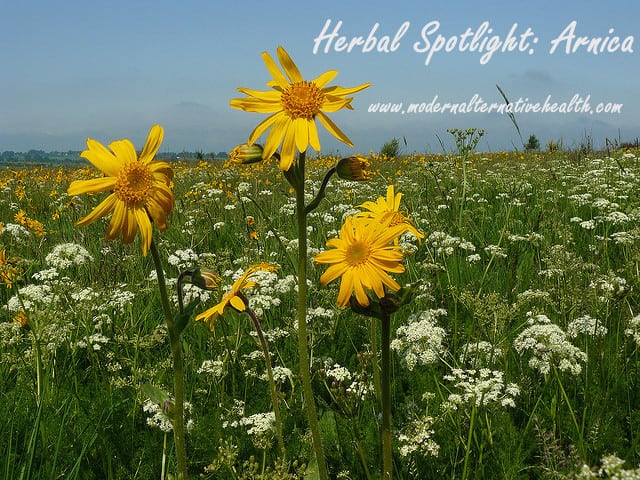Arnica has been used for centuries to relieve a number of painful ailments. While it is one of the most common herbal remedies to find its way into mainstream medicine cabinets it doesn’t get by without its share of skeptics. Many studies have been done in which there are mixed results. Many, however, were positive, like the one in 2007 that set out to prove that for people with osteoarthritis an arnica gel preparation worked just as well as daily ibuprofen. Personally, we have used it for bruising and sprains with success.
What does it look like?
Arnica plants usually consist of orange or yellow flowers with upwards of 15 petals. They share a family with a sunflower and have many similar characteristics. The flower itself has a slight aroma while the roots are more pungent. The roots of arnica contain a substance called thymol – which is anti-bacterial and anti-fungal. Both the flower and the root are used.
What can it treat?
- Bruising
- Muscle strain
- swelling
- Sprains
- Pain
- Insect bites
- Headaches
- Minor burns
How is it used?
Arnica can be used topically in creams, ointments, and salves. It can be used fresh or dried and made into tinctures, compresses and poultices. It is often used in Homeopathy where a tablet form is taken orally. It works to treat the ailments listed above and can work to prevent them for progressing – for example preventing a bruise for getting worse.
Arnica Tincture
Chop 1/4 cup of dried arnica flowers. Place the flowers in a sterile mason jar and add 3/4 cup of vodka, then seal.
Place tincture in a cool place (like your cupboard) for two to three weeks, shaking daily. I always remember to shake when cooking because I see it. Make sure you don”t put it somewhere your will forget.
At the end of this time, strain out the flowers and discard them. Pour the tincture into a dark colored bottle and store in a cool, dark place. You can now use it by adding a few drops to water to soak a sprain or by applying it mixed with water to gauze or cloth to use as a compress.
Keep in mind…
Don’t confuse the herbal form for the homeopathic. The herbal form that you use in creams or tinctures should be applied to unbroken skin and not consumed. If you apply arnica too frequently topically over a long period of time the skin can become irritated. The homeopathic form is intended for internal use and is the only form that should be consumed. Make sure you know what your taking.



0 thoughts on “Herbal Profile: Arnica”